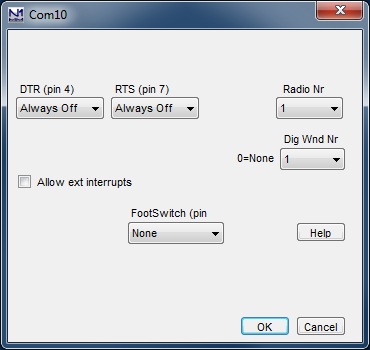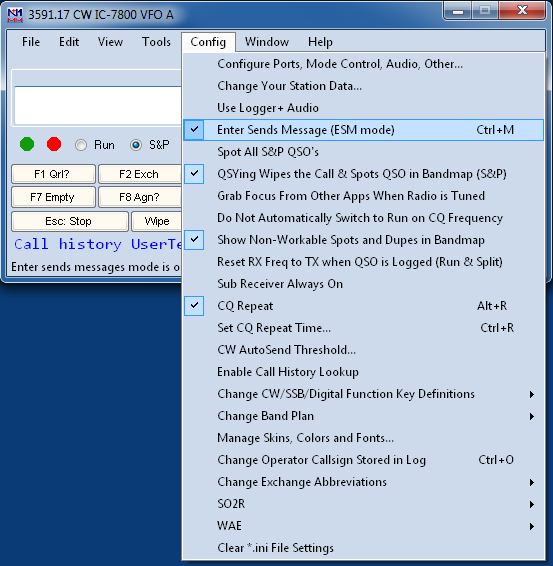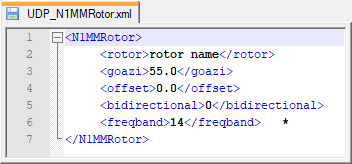
- #KEY KENWOOD 590 WITH N1MM LOGGER INSTALL#
- #KEY KENWOOD 590 WITH N1MM LOGGER SERIAL#
- #KEY KENWOOD 590 WITH N1MM LOGGER DRIVERS#
- #KEY KENWOOD 590 WITH N1MM LOGGER MANUAL#
Don’t worry, we’ll walk you through the part you need now. That brings up the following, rather intimidating dialog. Choose Configure Ports, Mode Control, Audio, Other. Once you have the hardware hooked up between your computer and your radio, start N1MM Logger+ and open the Config menu in the Entry window. See this earlier section for information on avoiding problems with USB ports going to sleep. If yours is one of these, check the Supported Radios entry for your radio (and the radio manual) to find USB interfacing details. See USB Interface Devices for a full rundown on user experience with various specific adapters. If you encounter quirky performance or an 8020 error, that may be why. Some USB adapters, particularly those using a Prolific chip-set, are erratic with some programs, particularly programs written in Visual Basic (like N1MM Logger Classic).
#KEY KENWOOD 590 WITH N1MM LOGGER SERIAL#
If your radio uses either Icom’s CI-V standard or another non-RS-232 serial port, you’ll need an appropriate converter cable to get from either USB or RS-232 to your radio.
#KEY KENWOOD 590 WITH N1MM LOGGER DRIVERS#
If your radio has a standard RS-232 serial port, once you have purchased a USB-to-serial adapter and installed the drivers for it, N1MM logger can work with your radio just fine. USB has largely both RS-232 serial ports and LPT parallel ports. Assuming you find your radio there, look for any specific settings or peculiarities that need to be addressed and make a note of them.

#KEY KENWOOD 590 WITH N1MM LOGGER MANUAL#
Fortunately, virtually all modern radios incorporate a serial port to enable them to swap information and commands with the computer.Ī first step is to look up your transceiver in the manual section titled Supported Radios. Regardless of whether you want to operate phone, CW or digital modes, the most useful and important interface is the one between your computer, N1MM Logger+ and your radio. The mode to be recorded in the log is displayed in the title bar of the Entry window.įor more details about these commands, see the Entry Window Text Commands in the manual. If you enter SSB, the program will substitute the customary sideband (e.g., LSB on 40-160) USB and LSB can be used to enter the opposite sideband, should you ever need to. Recognized entries are CW, RTTY, PSK and SSB, USB or LSB. The new frequency will appear in the title bar of the Entry window.Įnter mode changes similarly. For example 14025.1 (or 14025,1 if your computer uses comma as the decimal separator). If you want the log to include the actual frequency, enter the complete frequency in kHz. If you want the log to only indicate the band, and not specific frequency information, enter the frequency of the bottom of the band in kHz (note that some contest administrators request that manual frequency entries always be bottom of band). Set your frequency by typing it into the Callsign textbox and hitting Enter.
#KEY KENWOOD 590 WITH N1MM LOGGER INSTALL#
Maybe you’re just getting started and have not had time to install and configure an interface? Perhaps your radio does not support PC integration, or you have a computer but it lacks the necessary I/O ports to connect a radio? Or maybe you’re operating from a short-term portable location and don’t have the time or equipment to connect the radio to the computer? Whatever the reason, there are special keystrokes that you need to enter in the Entry Window to inform N1MM Loggger+ of the band and mode that you are operating.

There are many reasons why you could find yourself operating in manual mode.

Interfacing Basics Operating without an Interface – Manual Mode



 0 kommentar(er)
0 kommentar(er)
